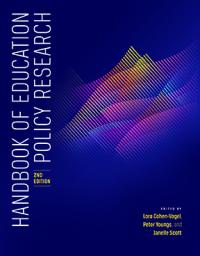Educational Policy, Racial Equity, and the Courts
AERA members: Please enter your coupon code in the shopping cart coupon discount field.
Educational Policy, Racial Equity, and the Courts
Maria M. Lewis
Raquel Muñiz
Liliana M. Garces
Preston Green
Click here to view and purchase Handbook of Education Policy Research, 2nd Edition
Title information
Judicial opinions, and how they are interpreted and implemented, have greatly influenced policies and practices that address racial equity in education. In this chapter, the authors focus on five key areas of litigation that, while not comprehensive, are all inextricably connected to racial equity, including cases related to race-conscious policies, school finance, school choice, special education, and LGBTQ+ students. To conceptualize the role of courts across these five areas, the authors apply a lens (“discretionary boundary setting”) that draws attention to the role of the courts in delineating the legal bounds of discretion for educational policy and practice and the role of actors who interpret and implement these discretionary boundaries. They argue that while judicial opinions set the bounds of discretion, implementing actors can center educational racial equity by adopting policies and practices that resist political pressures and disrupt the structural barriers that constrain students’ opportunities and outcomes.
Keywords: law; education policy; educational equity; racial equity

